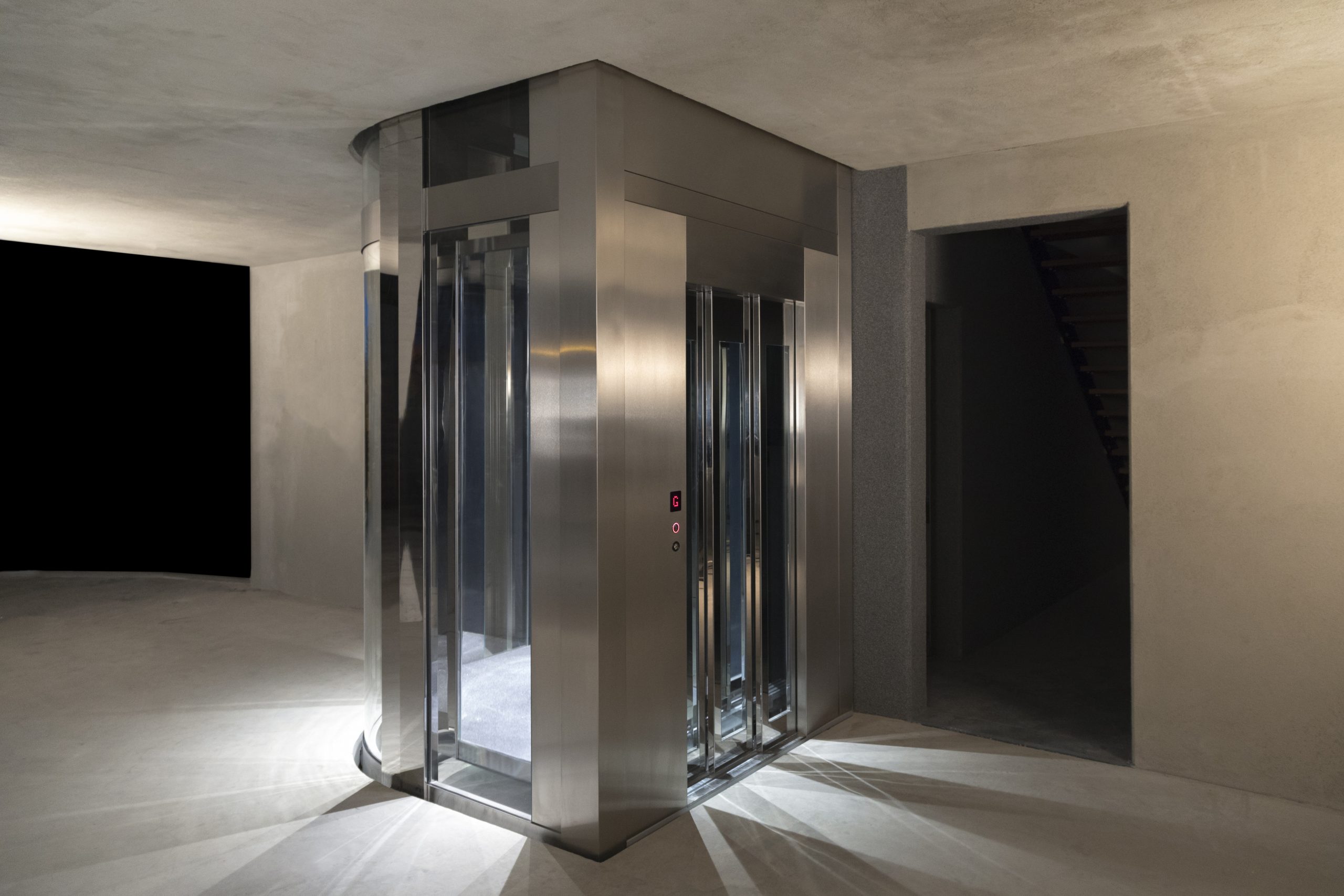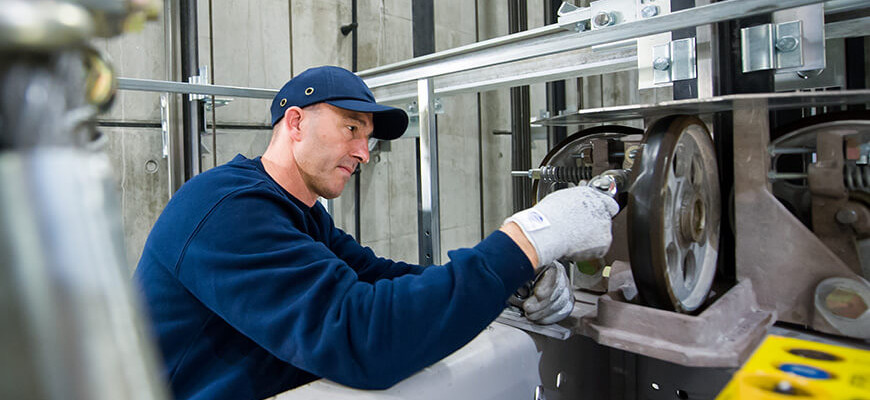Connect with Highly-Rated Lift Engineers Near Me for Quick Solutions
Wiki Article
Thorough Elevator Service Plan Incorporating Troubleshooting, Change, and Calibration
In the realm of upright transport systems, elevators play an important role in making certain reliable activity within structures. A comprehensive elevator service plan that integrates calibration, troubleshooting, and change is not simply a regular maintenance timetable; it is a detailed strategy to elevating the efficiency and safety and security criteria of these indispensable devices. By meticulously attending to potential issues, tweak functional setups, and making sure precise calibration, this service plan can substantially influence the capability and lifespan of elevators. However how specifically do these components come with each other to develop a trusted and seamless upright transportation experience? Let's explore the elaborate information behind this customized solution strategy.
Relevance of Lift Maintenance
Elevator upkeep is an essential facet of making sure the risk-free and effective operation of a building's vertical transportation system. Routine upkeep not just prolongs the lifespan of the lift but additionally lessens the risk of unexpected failures, making sure the safety and security of owners. By sticking to an organized upkeep plan, building proprietors and center managers can recognize and deal with potential concerns prior to they rise right into significant troubles, therefore lowering downtime and expensive fixings.Routine maintenance tasks include checking and lubing relocating components, testing safety attributes, and changing mechanisms to keep optimum performance. Additionally, regular maintenance aids to make certain that the lift follows safety regulations and criteria established by appropriate authorities. Overlooking upkeep can cause malfunctions, such as abrupt quits in between floors, door issues, or electric failings, all of which can inconvenience customers and compromise their safety and security.
Fixing Techniques for Lifts
Ensuring the secure and effective procedure of a building's upright transport system via regular maintenance likewise involves the application of effective fixing methods for addressing potential elevator issues without delay. Troubleshooting techniques for lifts are essential to maintaining a trusted lift solution. One common troubleshooting method is to use the lift's analysis system, which can give beneficial information on any mistakes or breakdowns. By examining the diagnostic information, service technicians can pinpoint the origin of the trouble and take proper corrective actions.Another essential troubleshooting strategy is performing a thorough physical inspection of the lift components. This involves monitoring for any kind of indications of wear and tear, loose connections, or uncommon noises during operation. By visually evaluating the elevator equipment and electrical systems, service technicians can identify prospective concerns before they rise into significant problems.
In addition, troubleshooting methods for elevators typically involve testing various safety attributes, such as emergency situation brakes and door sensors, to guarantee they are working correctly. On a regular basis evaluating these safety systems can help avoid accidents and guarantee guest safety and security. By integrating these fixing methods right into an elevator service strategy, building proprietors can minimize downtime, lower fixing prices, and assure a smooth vertical transport experience for passengers.
Accuracy Adjustments in Lift Solution
Carrying out precise changes is vital in keeping the optimum performance and performance of lift systems within a building. lift servicing. Lifts are complicated mechanical systems that require meticulous fine-tuning to ensure effective and smooth operation. Precision modifications play an important role in improving safety, reducing downtime, and extending the life expectancy of elevator componentsWhen conducting accuracy adjustments in lift solution, service technicians have to possess a deep understanding of the system's dynamics and auto mechanics. Little inconsistencies in progressing, speed, or positioning can lead to substantial concerns otherwise resolved promptly. By meticulously adjusting parameters such as door closing times, leveling precision, and acceleration rates, technicians can maximize the overall performance of the elevator.
Moreover, accuracy changes assist protect against premature damage on vital parts, such as cords, pulley-blocks, and control systems. Regularly set up upkeep that consists of fine-tuning adjustments can mitigate the risk of pricey fixings and unexpected breakdowns. Lift provider must prioritize accuracy changes as part of their comprehensive upkeep strategies to maintain the greatest criteria of integrity and traveler safety and security.
The Value of Calibration Procedures

Calibration procedures additionally play an essential role in extending the lifespan of lift devices. Regular calibration assists identify potential issues early, enabling for timely adjustments or replacements before significant issues emerge. This aggressive technique not only stops pricey downtime however likewise adds to the general integrity of the lift system.
In addition, calibration is essential for guaranteeing compliance with market policies and criteria. By following maker suggestions and industry best practices during calibration procedures, lift company can assure that the system satisfies all needed safety and security requirements. Correctly adjusted elevators not only improve user experience but also show a dedication to guest security and building code compliance.
Enhancing Elevator Efficiency and Long Life
To maximize lift performance and prolong its long life, a detailed maintenance schedule is imperative. Routine maintenance not just makes certain that the lift runs effectively however additionally assists in determining potential problems prior to they intensify, thereby decreasing downtime and pricey fixings.In addition, applying modern-day innovations like IoT sensors and predictive upkeep software program can give real-time data on elevator efficiency, enabling anticipating upkeep scheduling and lessening unanticipated failures. Upgrading older elevator systems with energy-efficient elements can additionally add to better performance and decreased power intake, causing cost financial savings over time. By focusing on normal upkeep, taking on new innovations, and considering system upgrades, structure proprietors can significantly enhance elevator performance and lengthen its lifespan, ensuring smooth operations for residents and site visitors alike.

Conclusion
In final thought, lift upkeep is essential for guaranteeing optimal performance and durability. By applying repairing techniques, accuracy adjustments, and calibration procedures, elevator provider can improve the total capability of lifts. Routine upkeep not only enhances safety and integrity however additionally minimizes downtime food lift name and expensive repair work. Investing in a thorough lift service plan is essential for optimizing the lifespan of elevators and making sure smooth transport for developing residents.Repairing methods for lifts are vital to keeping a reliable elevator solution.In addition, applying modern innovations like IoT sensors and predictive maintenance software can give real-time information on elevator efficiency, making it possible for predictive maintenance scheduling and minimizing unforeseen malfunctions (food lift name). By prioritizing normal upkeep, adopting new technologies, and thinking about system upgrades, structure proprietors can dramatically boost elevator efficiency and lengthen its lifespan, ensuring smooth operations for visitors and occupants alike
By carrying out repairing strategies, accuracy modifications, and calibration procedures, elevator service companies can improve the total functionality of elevators. Spending in an extensive lift service plan is vital for making best use of the lifespan of elevators and making sure smooth transportation for building occupants.
Report this wiki page